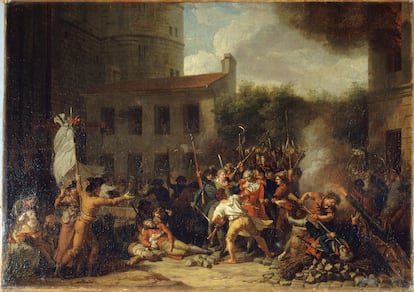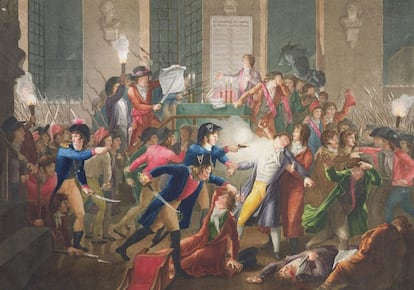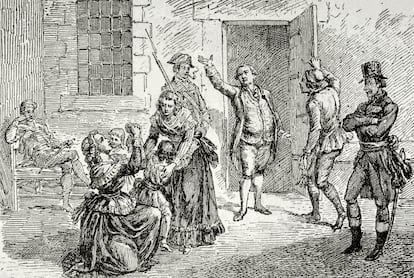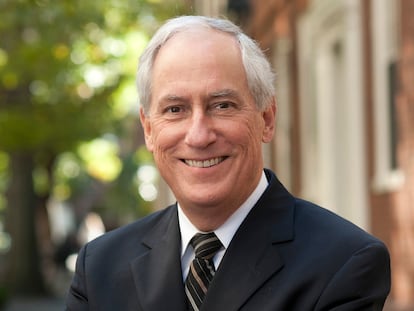At the end of the 18th century, many French people agreed on an astonishing idea: they could create a new world. To such an extent that they wanted to change religion for Reason, the name of the months (brumaire, germinal, thermidor), the way of measuring things (the decimal metric system, which we continue to use) or, fundamentally, the political and social system. And, to a large extent, they did.
The French Revolution was a historical hinge that articulated the step towards modern societies: it sowed the ideas of freedom, equality, citizenship and sovereignty that would end up shaping liberal democracies and the contemporary world. A world that, by the way, some today call into question from the extreme right, by claiming traditional values more typical of the Old Regime than of the enlightened era that inaugurated modernity.
But what happened in the decades before the storming of the Bastille, in 1789, that gave rise to that revolution, perhaps the most important in history? How was that “revolutionary temperament” formed that made the French—specifically the Parisians—think that they could reinvent the world? There are immediate historical causes: the succession of bad harvests and increases in bread prices, the economic crisis due to war enterprises and poor fiscal management, or the inequality between the splendor of the court of Versailles and the hungry masses: “If they are hungry, let them eat cakes,” is very famously attributed to Queen Marie Antoinette (she probably did not say it, but it illustrates the feeling towards the monarchy).
The historian Robert Darnton (New York, 86 years old), who has made a career as an expert in the history of books and reading, and has been a professor at Princeton University and director of the Harvard University library, has wanted to study that time, focusing not so much on the great causes of History in capital letters, but on how Parisians saw the situation at those same moments, on how ideas circulated through the streets of Paris: a society not so different from ours, with its lampoons, pamphlets and novels, with their news circuits centered in cafes, parks and under the Krakow Tree of the Palais-Royal, where the latest rumors and news were shared (today we have social networks): from the juiciest court gossip to the fascination with balloon travel.
Thus, the most striking thing about the essay The revolutionary temperament. How the French Revolution was forged. Paris 1748-1789 (Taurus, with translation by Jordi Ainaud i Escudero), by Darnton, is that both the topic (the French Revolution) and the method used to collect the information are equally important. This interest in the ways of communicating in that 18th century Paris shows that it was also an “information society”, that thing that seems so contemporary to us.
“The popular phrase ‘we live in an information society’ is true, but also misleading, because every society was an information society, each in its own way, according to the means available,” the historian tells this newspaper, who tries to show how information reached ordinary Parisians, whether they were ordinary workers or elites attending sophisticated salons. Paris had no newspapers in the modern sense of the term—unlike Amsterdam or London—so under the Krakow Tree the newspapers gathered. short stories to exchange information. There were other nerve centers of gossip: certain benches in the Luxembourg Gardens, cafes, street corners or markets.

“Los short stories by hand They wrote down the rumors and compiled them in clandestine news sheets, which were later printed and became underground best-sellers,” explains Darnton. The songs, whose lyrics changed over standard melodies, were another way of finding out about things, through street singers. Also the engravings, rumors, graffiti, public readings of pamphlets… all contributed to what the author calls the “revolutionary mood.”
A “revolutionary spirit” that included the love of freedom and commitment to the nation, the familiarity with violence and the denunciation of vice, the weariness with the degeneration of the aristocracy and the estrangement from the Church, and which was based on the widespread conviction that the political system had degenerated into a despotism. “The French understood it as ministerial despotism. They directed their anger against the government—in particular, against ministers like Maupeou, Terray, Calonne, Lamoignon, and Brienne—not against the king. In my book I try to show how that collective consciousness developed over forty years, how it took shape in response to events, and how it gained enough strength to mobilize an uprising in 1789,” says the author.

Although we associate the French Revolution with much of what is virtuous about modern societies, the truth is that, as shown in the essay, it was a period of unusual violence, not only due to the famous guillotine (which was considered a pious and civilized way of killing), but also due to other types of riots, lynchings or dismemberments. How do we deal with that? “Much of the violence remains incomprehensible, at least to me,” says the historian, “even so, it must be taken into account that violence existed in everyday life before 1789, in public hangings or in riots known as ‘popular emotions’.” Darnton tries to show that those “emotions” had roots in the Ancien Regime, as well as to record the violence of the counterrevolution that also generated its “counterviolence.” “Without downplaying the bloodshed, I think it is essential to highlight how the Revolution freed the French from the arbitrary power and oppression embedded in the political and social order of the Ancien Regime,” adds the author.
The French Revolution is portrayed here as a prodigious moment in which everything seemed possible, in which everything seemed to be able to be transformed, in which the world itself could begin again. Today the idea is rather the opposite; Margaret Thatcher already advanced it in the 80s: “There is no alternative.” How was that feeling generated? “We could call it ‘possibilism’, that is, the conviction that the sociopolitical order is not fixed in an unalterable way in its current form, but that it can change, that ordinary people can intervene to modify it, that things as they are can be transformed into things as they should be,” says the historian.
The way in which this conviction is developed is long and complex and precisely has to do, in the author’s opinion, with how the information was transmitted and how it was interpreted; and how, thanks to that, the system was losing legitimacy. “Without downplaying factors such as the price of bread, I believe that the conviction of legitimacy works like the cement that holds political systems together. When it is eroded, revolution becomes possible.”

The idea of revolution has long enjoyed prestige. Some, like the French or the American, created the modern world. Others, like the highly criticized Russian one, changed the course of history and generated an entire geopolitical bloc that disputed world hegemony for decades. Today, the word seems to be used only in advertising or to talk about technological advances. What remains of the idea of revolution? “I agree that the notion of revolution has been trivialized, as in advertisements about a ‘revolution’ in clothing or hairstyles. Few people know much about the French or American revolutions, or find inspiration in revolutionary tradition,” Darnton says. “But when people face injustice, they need to rely on some historical tradition to resist,” he concludes.

